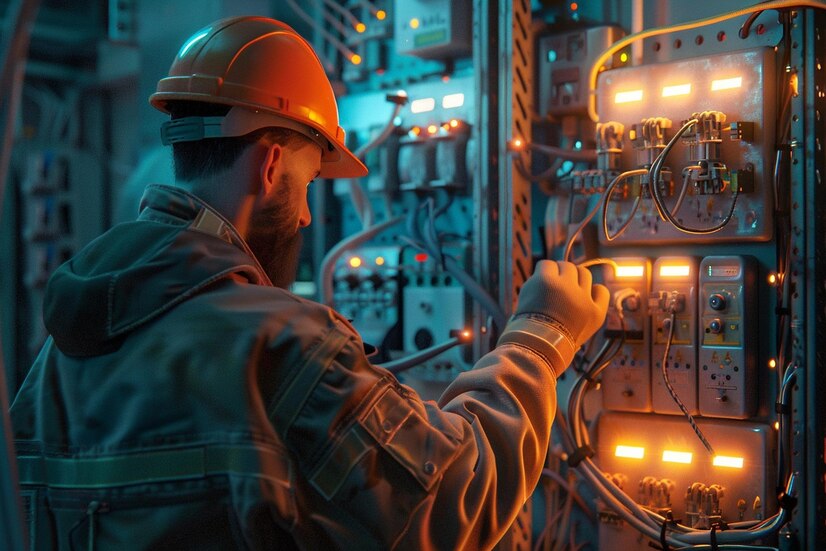Electronics
Importance of the Coil in a Pleasant Vaping Experience

Vaping is a pleasant experience that can create plenty of social and antisocial opportunities for you. You can connect with other vapers, enjoy the attention of the environment with all the ghost clouds, and find a great way to distract from stressful situations.
But do you know which things have the most impact on your overall vaping experience? Take a guess. Is it the battery? E-liquid consistency? Or the shape of the vape / disposable vape ( like elf bar) ? No, the answer is “coil”. You would never have guessed that the coil can make or break your vaping experience. You can be a great vaper, but having complete knowledge about your vape coil always helps. This article will acknowledge the importance of coil in a vape device.
The Role Of Vape Coil In Vaping:
The vape coil holds the most responsibility in the whole process of vaping. It heats the E-liquid ( e.g of ejuice is 88 vape liquid ) present in the tank of the vape. Here’s how the coil works;
- First, when you power the vape device, the wicking material absorbs E-juice.
- Second, the wire in your coil heats the wicking material soaked in E-juice.
- Lastly, you take a puff and vapour produced by the liquid in the wick travels from the mouthpiece to your mouth/lungs.
Following are the parts where the coil affects directly.
Cloud Production:
The type of coil you choose to vape influences directly the amount of cloud you’re exhaling. High resistance standard coils support less opaque and intense clouds. However, the low resistance sub-ohm devices support high opaque ghost clouds production.
Airflow Adjustments:
High resistance standard coils do not have the option available for airflow adjustment. However, in modern devices with sub-ohm coils, there’s an option available for you to adjust the airflow. If you set the airflow ventilation high, your vape will have more vast clouds, lesser harsh throat hits, and a lower flavour taste. On the other hand, if you set the airflow ventilation low, you’ll get a flavourful, harder, and harsher throat hit (similar to smoking) with lower vapour.
Battery Effectiveness:
The higher the coil’s wattage power, the higher the battery will be affected and used and vice versa.
Difference Between High Resistance And Low Resistance Coil:
The coil’s resistance is written in the product specifications section on the vape device/box. If the coil resistance is R > 1, it’s a high resistance coil/standard coil. Such devices use lower wattage power to vapourise the E-liquid. It’s best for less experienced vapers or beginners.
On the other hand, if coil resistance is R < 1, it’s a low resistance coil (sub-ohm device). More current is passed through the wires of sub-ohm devices, using higher wattage power and producing thicker clouds of vapour. Sub-ohm devices are best for pro vapers or anyone who loves to make huge vapour clouds.
Why does The Coil need To Be Saturated?
To blow out ghost clouds of flavourful vapour and attractive large O rings, your coil needs to soak in a reasonable amount of E-liquid. If you keep on chain vaping or don’t give the coil to prime after changing E-juice ( like 88 vape liquid ), the wick will be left dried out and deliver burn and dry hits.
The Time Of Coil Changing:
No matter how expensive or good your vape coil is, there comes a time when it needs to be replaced in some devices. The time of the coil changing depends on its usage and health. If you are experiencing burn or dry hits even when the E-liquid is full, and you’re giving the wick proper time to saturate, you should know it’s time to say farewell to your vape coil.
Electronics
Essential Electrical Safety Tips for Homeowners

The Importance of Electrical Safety
Electrical safety is crucial in preventing accidents, injuries, and property damage. Though it’s easy to overlook some of the potential hazards in our homes, understanding the risks and taking steps to mitigate them can make a significant difference in maintaining a safe living environment. For homeowners in the Philadelphia area considering electrical service upgrades Philadelphia PA, it’s essential to be aware of these safety measures to avoid any risks. Practicing electrical safety starts with a commitment to regularly assess and address potential electrical issues in your living space. Neglecting these concerns can lead to severe consequences, from electrical fires to life-threatening shocks.
2. Common Electrical Hazards in Homes
Many homeowners are unaware of the common electrical hazards lurking in their homes. These can include faulty wiring, overloaded outlets, and improperly used appliances. Recognizing these hazards allows you to take proactive measures to avoid potential disasters. Always keep an eye out for frayed wires, buzzing outlets, and flickering lights, as these signs can indicate underlying electrical issues. Faulty wiring, in particular, poses a significant risk as it can deteriorate over time and become a catalyst for electrical fires. Outdated or damaged wiring should be replaced immediately by a professional to ensure safety.
3. Preventing Electrical Fires
Any home is at great risk from electrical fires. Regular maintenance and proper usage of electrical devices are critical. Ensuring that outlets are not overloaded and that wiring is not damaged can go a long way in preventing such fires. According to the National Fire Protection Association, nearly 50,000 home fires each year in the U.S. are caused by electrical failures or malfunctions. Installing smoke detectors and regularly testing them can also provide an added layer of safety. Moreover, investing in a fire extinguisher specifically designed for electrical fires can be incredibly valuable in an emergency.
4. Child-Proofing Electrical Outlets
Young children are naturally curious and can be at a high risk of electrical shock. Child-proofing outlets with protective covers and ensuring that cords are out of reach can help keep little ones safe. Safety experts from CPSC emphasize the importance of these precautions, especially in households with toddlers. Another way to make the house a safer place is to teach older kids about the risks associated with electricity. It’s essential to instill good habits early, such as not touching outlets with wet hands and avoiding playing with electrical cords.
5. The Role of Ground Fault Circuit Interrupters (GFCIs)
GFCIs are crucial for preventing electrical shock, particularly in wet environments like kitchens and bathrooms. They operate by cutting off power when they identify a ground fault, adding a vital line of defense against electrocution. The likelihood of electrical mishaps occurring in the home can be greatly decreased by installing GFCIs in all damp locations. Additionally, periodic testing of GFCIs is recommended to ensure they are functioning correctly. This can be done by using the “test” and “reset” buttons commonly found on GFCI outlets.
6. Importance of Professional Electrical Inspections
Regular professional inspections can identify electrical issues that are not obvious to the untrained eye. Licensed electricians can guarantee that the electrical system in your house is safe and operating within code, averting possible risks before they develop into significant issues. Scheduling an inspection every few years or when buying a new home can provide valuable peace of mind. During inspections, electricians can spot issues like outdated wiring, inefficient electrical panels, and potential overloads, addressing them before they lead to emergencies.
7. Should You DIY Electrical Repairs?
Tackling electrical repairs on your own can be tempting but is not always advisable. Electrical work requires a high level of expertise and knowledge to avoid risks. When in doubt, it is better to hire a professional to ensure the job is done safely and correctly. Mistakes in electrical work can lead to serious hazards, including fires and electrocution. Additionally, improper repairs can void home insurance policies, leaving homeowners financially vulnerable in the event of an accident. Always prioritize safety and seek professional assistance for electrical issues beyond basic tasks like replacing light bulbs.
8. Advancing Electrical Technologies for Safety
With the advent of new technologies, enhancing electrical safety has become more feasible. Smart home systems, energy-efficient appliances, and advanced circuit breakers are just a few examples of how technology can help maintain a safe home. Staying informed about these advancements can make a significant difference in ensuring that your home remains a safe haven. Continually updating your home with the latest safety technologies is a wise investment in your family’s well-being. Innovations such as smart plugs that remotely disconnect appliances and intelligent lighting systems that automatically turn off when not in use significantly reduce electrical hazards.
Electronics
Head Studios: Unveiling the Sonic Alchemy of Electronic Music

Immersed in a captivating blend of creativity and technology. Head Studios unfolds as a unique sanctuary for electronic music enthusiasts. Providing an immersive environment where sound waves come to life and metamorphose into authentic works of art. Established in 2010 by Alessandro Rossi, a trailblazer in music production, Head Studios swiftly garnered a reputation as the epicentre of creativity and innovation within the electronic music scene.
Cutting-edge technology and Innovative Instruments
At the heart of Head Studios’ allure lies its commitment to cutting-edge technology and innovative instruments that swing wide the gates to new creative possibilities. Within its walls, are state-of-the-art mixing consoles. World-class synthesizers and an extensive array of specialized equipment empower artists to sculpt a distinctive sonic identity. The coexistence of traditional and digital instruments allows for an exploration of a myriad of genres. Transforming the studio into a sonic laboratory where ideas take tangible form and undergo evolution.
The fusion of these technological marvels creates an atmosphere where sonic boundaries are not barriers but thresholds inviting artists to push the limits of what electronic music can be. This commitment to innovation ensures that Head Studios remains at the forefront of sonic exploration. Providing a canvas for artists to paint with the broad strokes of technological ingenuity.
Cultural Impact and Music Education
Head Studios extends its influence beyond the confines of music production, dedicating itself to shaping the future of the music scene through comprehensive educational programs. Beyond its function as a recording studio, Head Studios has become a learning hub. With workshops and lessons inspiring the upcoming generations of musicians and producers. This commitment contributes to the establishment of a robust foundation for the evolution of electronic music.
The studio’s active participation in cultural and community events solidifies its role as a social catalyst that transcends mere music production. By nurturing local talent and providing educational opportunities. Head Studios becomes a key player in fostering a thriving community of musicians and enthusiasts.
Conclusion
In conclusion, Head Studios transcends the conventional realm of a recording studio; it is a crucible of creativity. A nurturing environment that not only stimulates growth but also fuels innovation within the realm of electronic music. Bolstered by a passionate founder, state-of-the-art technologies, and a community of dedicated artists. Head Studios continues to stand tall as a guiding light in the vast universe of sound, shaping the destiny of electronic music with each resonant note it produces.
Its legacy lies in the constant moulding of the musical landscape, remaining an illuminating beacon for aficionados of creativity and groundbreaking sonic experiences. As the musical journey unfolds. Head Studio remains a steadfast force, steering the course of electronic music towards new and uncharted territories. With a commitment to technology, education, and cultural impact. Head Studio ensures that its impact on the electronic music scene resonates far beyond its physical walls, echoing in the hearts and minds of artists and enthusiasts alike.
Electronics
Bomber: The Sonic Enigma in the Expansive Realm of Electronic Music

In the expansive and dynamic realm of electronic music, one enigmatic figure has emerged, captivating the souls of music enthusiasts and igniting dance floors with pulsating beats—Bomber, the masked DJ who orchestrates a symphony of emotions through the intricate tapestry of electronic vibrations.
The Enigma Veiled Behind Bomber’s Futuristic Mask
Bomber, with a penchant for mystery, chooses to conceal his identity behind an intricately designed mask, transcending the conventional norms of artist exposure. This mask, beyond being a mere accessory, takes on the role of a visual metaphor, transforming Bomber into an ethereal conductor whose face remains an undisclosed enigma. In an era marked by oversharing, Bomber stands as a testament to the power of mystique in the artistic realm.
Bomber’s Eclectic Harmony: A Fusion of Genres and Sonic Atmospheres
Bomber’s sonic palette is an eclectic harmony that effortlessly traverses the boundaries of conventional musical genres. With an unparalleled mastery of his craft, the masked DJ seamlessly blends techno, house, and an array of electronic elements. Creating a mesmerizing kaleidoscope of sonic emotions. Each track, meticulously curated, unfolds as a transformative journey, captivating audiences and satisfying their craving for unique auditory experiences.
A Visual Symphony: Bomber’s Extraordinary Performances
Bomber’s live performances transcend the boundaries of conventional DJ sets, evolving into extraordinary spectacles that fuse auditory and visual art. Bathed in the glow of mesmerizing lights and accompanied by intricate shadow play, the stage transforms into a dynamic canvas where Bomber, his music, and the mask coalesce into a multisensory experience. The mask, far from being a mere disguise, becomes a symbolic extension of the sonic narrative, enhancing the emotional connection between the artist and the audience.
From Underground Depths to Global Pinnacles: Bomber’s Ascendance
The sonic journey of Bomber commenced in the intimate depths of underground clubs. Where the magnetic allure of his music first took root. Yet, his sonic prowess has propelled him to global pinnacles, commanding the attention of diverse audiences on the grand stages of international festivals. Bomber emerges as a symbol of a global musical movement, breaking geographical boundaries and captivating hearts worldwide. From Tokyo’s neon-lit streets to the sun-soaked beaches of Ibiza, Bomber’s masked silhouette continues to shape the sonic landscape.
The Veiled Sonic Odyssey of Bomber’s Future
The future of Bomber’s sonic expedition unfolds as an odyssey veiled in uncertainty. Where every new track becomes a portal to uncharted musical dimensions. In an age where visual aesthetics often dominate, Bomber reiterates the potency of musical prowess. Demonstrating that the essence of his greatness lies in the mystical allure of his compositions. The mask worn by Bomber isn’t just a concealment—it’s a gateway to an undiscovered sonic universe. Promising a future laden with mystery and the enchanting magic of music.
Follow Bomber on Instagram: https://www.instagram.com/bombermusic/, on TikTok: https://tiktok.com/@bombermusicofficial, or go to www.bombermusic.net












